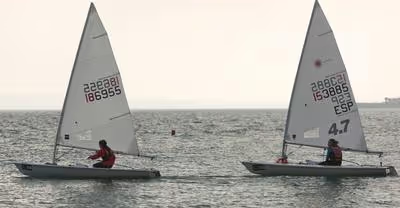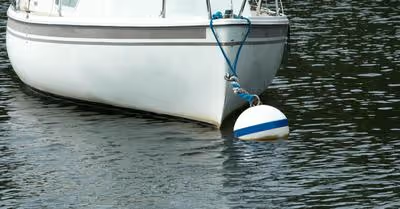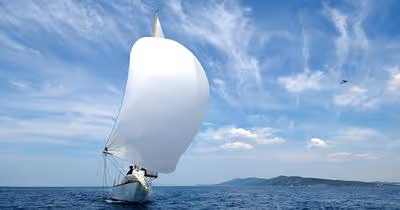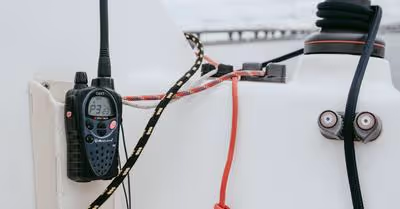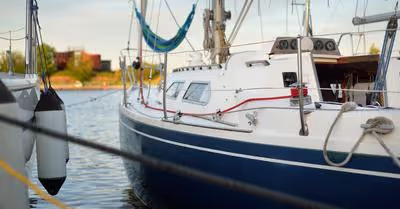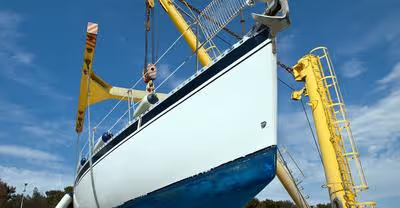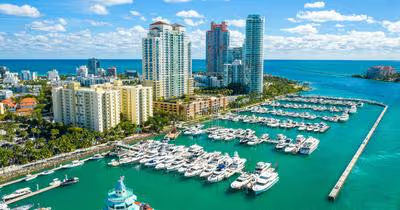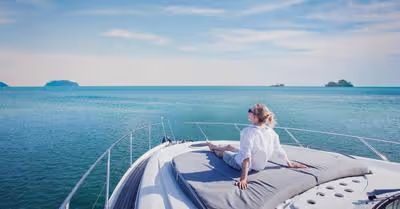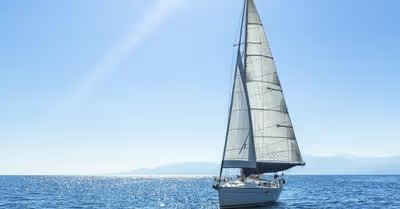Table of Contents
The English Channel
The English Channel is an Atlantic Ocean tributary that separates France and England. The Channel is around 150 miles wide and 350 miles long at its broadest point, and 21 miles wide at its narrowest point in the Dover Strait. When it comes to determining how long it takes to cross the English Channel, picking the right crossing site is critical.
How Long Does It Take to Sail the English Channel?
If you're crossing the English Channel for the first time, you must travel in the company of a skilled sailor who is familiar with the route. There are many sailing clubs on either side of the Channel that can assist you in finding a skilled sailor, whether you are sailing alone or in a group.
The route begins in Poole or Needle, England, and concludes in Cherbourg, France, covering 60 miles. You'll only have to handle massive ferries and cargo ships within a 15-mile radius if you take this route, which is manageable. This section is relatively simple, and you'll cross at just the right angles.
Keep in mind that the English Channel can become quite rough in the blink of an eye, especially in poor weather, so choose a route that is relatively short. If the weather is nice, you can cruise to Cherbourg from Needles or Poole.
However, ferries and cargo ships must be avoided at all costs. When encountering a ship heading down the Channel, even if you have the right of way, you should always change your speed or path to avoid an accident. Up-Channel ships have right of way and will expect you to remain out of their way.
A large ship may appear to be immobile to an experienced sailor, but these massive ships may sail at speeds of up to 25 knots, which can be startling, so be patient and give way before resuming your journey across the Channel. Fog can roll in after you've already sailed.
The right course in such situations is to turn back and avert the agony of limited visibility. It may be foolish to continue if you have misgivings because you will be put your life in danger.As a result, if you find yourself in a risky situation, you must keep continual vigilance, travel at a decent pace of about 6 nautical miles, and think clearly without panicking.
Make a Route Plan
After you've gathered all of your documents, determine which passage to use and build a strategy for it. This is a legal necessity, and crossing the Channel without it can result in prosecution, especially if an accident occurs. You should allow enough time to cross the Channel and even more time if possible. This is necessary to ensure that you cross only when the weather conditions are good.
As previously stated, do not try to outrun the container ships, and remember that the horizon can be deceiving, thus your protection should always be paramount. It is also possible to cross during the day. While night sailing may provide easier and calmer voyages, it is usually very cold, and navigating your yacht in the dark can be difficult. Remember that many French ports employ the lock-to-enter system, so give yourself sufficient time, especially if you don't want to speed past the lock.
So, if you're thinking about crossing the English Channel and want to try some cold French beer and wonderful French cuisine on the other side, you'll need to know what exactly you and your yacht need, and this is an excellent place to start.
The time of the year it has traveled, the number of sails it had, the size of the ship and sails, and the form of its hull, and whether it was carrying light cargo or heavy cargo, or was a warship all play a role in the response.
The weather (sea surface temperature, ice, fog, pressure, and wind), as well as the direction of sailing (westbound or eastbound), would have a considerable impact. Sailing times may also be affected by navigational tactics and approaches, instruments, and ship commanders' personal knowledge.
When looking for sailing times, researchers should consult Lloyd's List first. Lloyd's List is a publication that reports on shipping movements and casualties, as well as marine news and other commercial information.
The first extant issues were published in January 1741, and it was published daily beginning in 1837. However, in many cases, it simply mentions when ships arrive at a port and not when they depart.
Mail ships from New York to London took around two weeks longer than commerce ships from Rhode Island toFalmouthin the 18th century. The commerce ships, on the other hand, traversed a shorter distance.The English Channel and the American coast are approximately 3000 nautical miles apart. The normal nautical mile is 6080 feet long (1.151 statute miles or 1853m).
At sea, speed is measured in knots, with one knot equals one nautical mile (1.852 kilometers) per hour, or 1.151 miles per hour.Sailing speed records are impossible to keep because the speed is dependent on so many different factors, as previously explained.
Is crossing the English Channel difficult?
You're undoubtedly thinking that crossing the English Channel is difficult. Sailing across the English Channel shouldn't be tough if you're a good sailor with a sturdy sailboat. If you're crossing the canal for the first time, however, you must exercise caution. Being in the company of an experienced sailor is the best option.
The first important thing to remember is that the English Channel is a very busy marine area with a large number of ships and ferries arriving and going every year. This means that using a tiny sailboat is not recommended.You have to ensure that you don’t get too close to the ferries and ships if you have to use a small sailboat.
Recent Articles



